
Arrupe Hall by Moto Designshop
Saint Joseph’s University, Philadelphia, PA | Mixed-Use | Hunter Roberts
Arrupe Hall is a striking new multipurpose building for living, learning, working, and worshiping at Saint Joseph University.
Designed by the Philadelphia-based firm Moto Designshop, the relatively modest structure is a home for 15 Jesuit priests and a hub for the regional Jesuit community. The compelling design resonates with the scale and massing of surrounding campus buildings and embodies the university's "whole person" educational model with its mindful composition of three distinctive elements forming one cohesive whole: shared community spaces, private living quarters, and a sculptural chapel.
Acelab spoke with Moto project manager Molly Baum about the project and her experience specifying its windows.
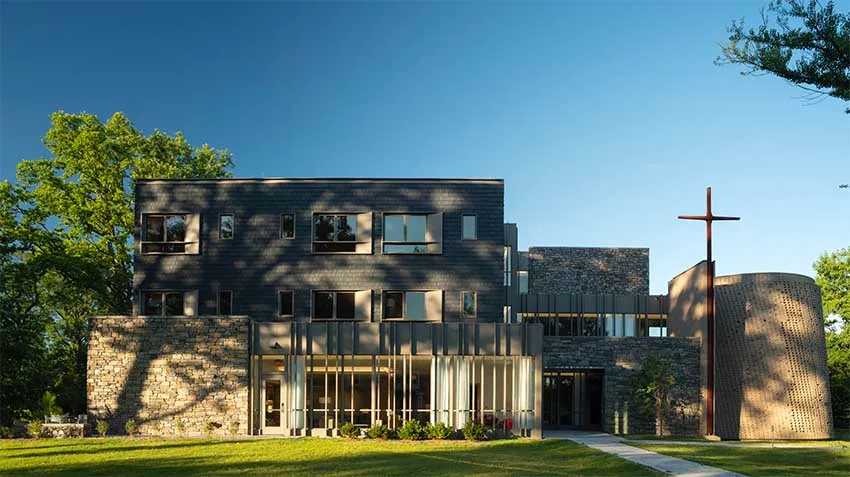
The color of the window frames and the Chapel’s brick were both selected to complement the natural stone used in the building’s construction. (Image by Nic Lehoux)
Acelab: First, can you tell me about the different types of windows in the project? You have these very clearly defined programmatic areas. Is there a correspondence between window type and program?
Molly: Completely. The windows were selected to support those uses. So in the private suites, we've got a Pella Architect Contemporary Clad. It's a metal-clad wood window incorporating a casement and a direct-set window mulled together to make a single unit — that’s the main window in each room. Then there’s a smaller window off to the side for the priests to look out while they’re working at their desks.
Products from this Case Study on Acelab
Windows by: Pella Windows
Click on Images to see more
Browse AllAcelab: What about the more public community areas? From the outside, they’re designed as these glass-enclosed bars. It looks like you used some kind of storefront?
Molly: It has a storefront appearance. But that’s also a Pella Architect product. Those are all direct-set and simulating the look of storefront. It's funny, at my last firm we jokingly called stacking storefronts a poor man's curtain wall, and I feel like this is poor man’s storefront.
Acelab: So they’re just large windows that you’ve framed out?
Molly: Right. They are nearly 10-foot high units with an applied horizontal muntin. There had to be variously sized vertical supports between them. We concealed the rhythm of those members with these ornamental aluminum fins. They aren’t part of the window unit. They were attached at the head and sill after the windows were installed.
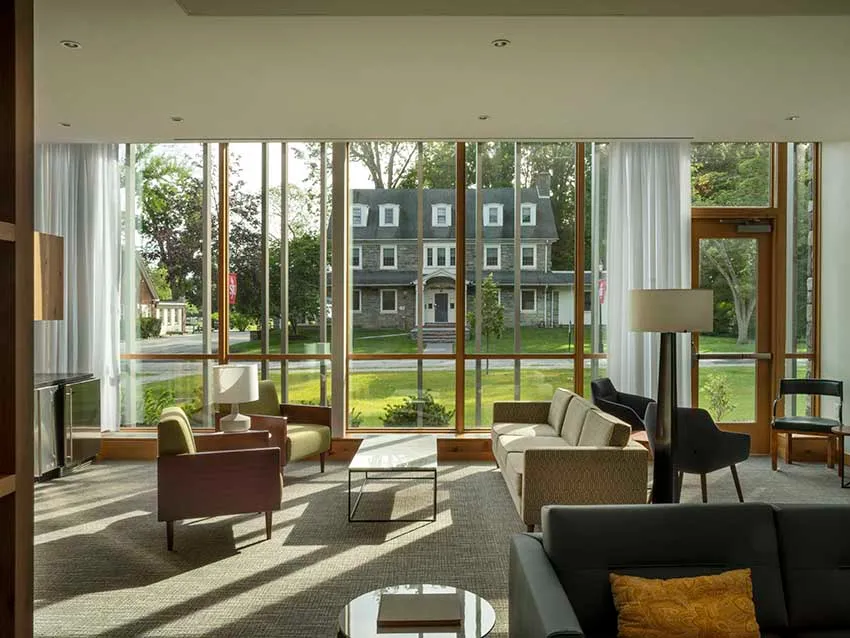
The Pella windows in the public meeting area simulate a storefront system. (Image by Nic Lehoux)
Acelab: Ah I see. Nice. Knowing that gives me more of an appreciation for the facade design. Those fins really do make the windows look continuous at first glance. It looks so natural.
Molly: We were trying to be a little tricky.
Acelab: Ok. So that’s the system in the public areas.
Molly: There’s also the skylight. A single pitch skylight unit by Velux above the monumental stair. It’s their Pinnacle 900.
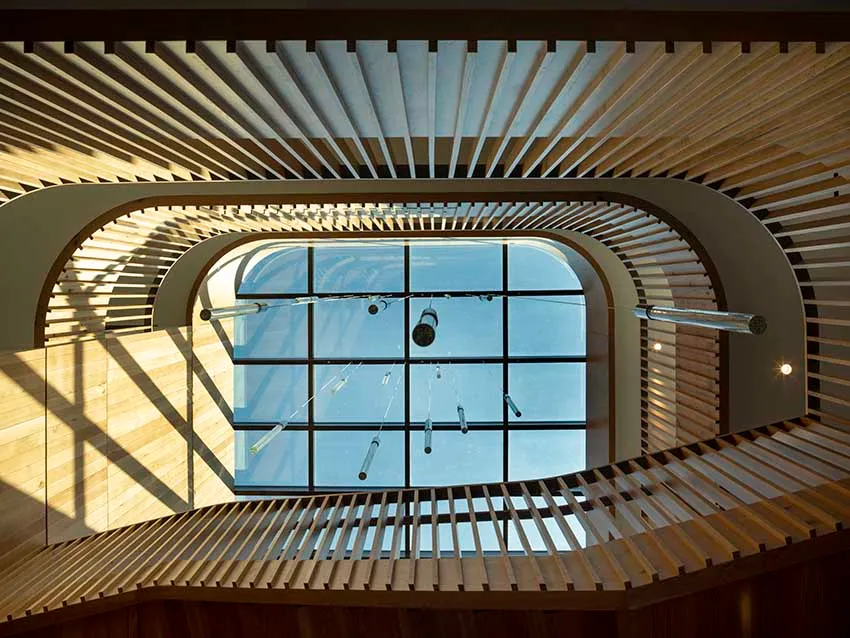
The central stairwell is in many ways the bright, brilliant heart of the building, connecting and lighting the residential areas and the public spaces below. (Image by Nic Lehoux)
Acelab: Were there any unique challenges with that?
Molly: We had a lot of back and forth with Velux about hanging light fixtures from the skylight. We were worried about having these big pendant canopies stuck onto the skylight. But we ended up finding these narrow lighting tracks that could be directly mounted to the skylight. Velux was great. They assured us it wouldn’t void the warranty.
Acelab: Oh, so they didn’t provide the tracks?
Molly: No. It was a custom lighting solution. The tracks are pretty well concealed against the window, but if you look closely, you can see them attached to the rafters. Each of the individual pendants plug into those tracks.
Acelab: Interesting. So the lights are actually hanging in parallel rows but at varied heights so it looks more organic.
Molly: That was our intention. We had this vision of total flexibility in placing these fixtures, and it became very much a game of hiding a more rigid system.
Acelab: There’s also a skylight in the Chapel, right?
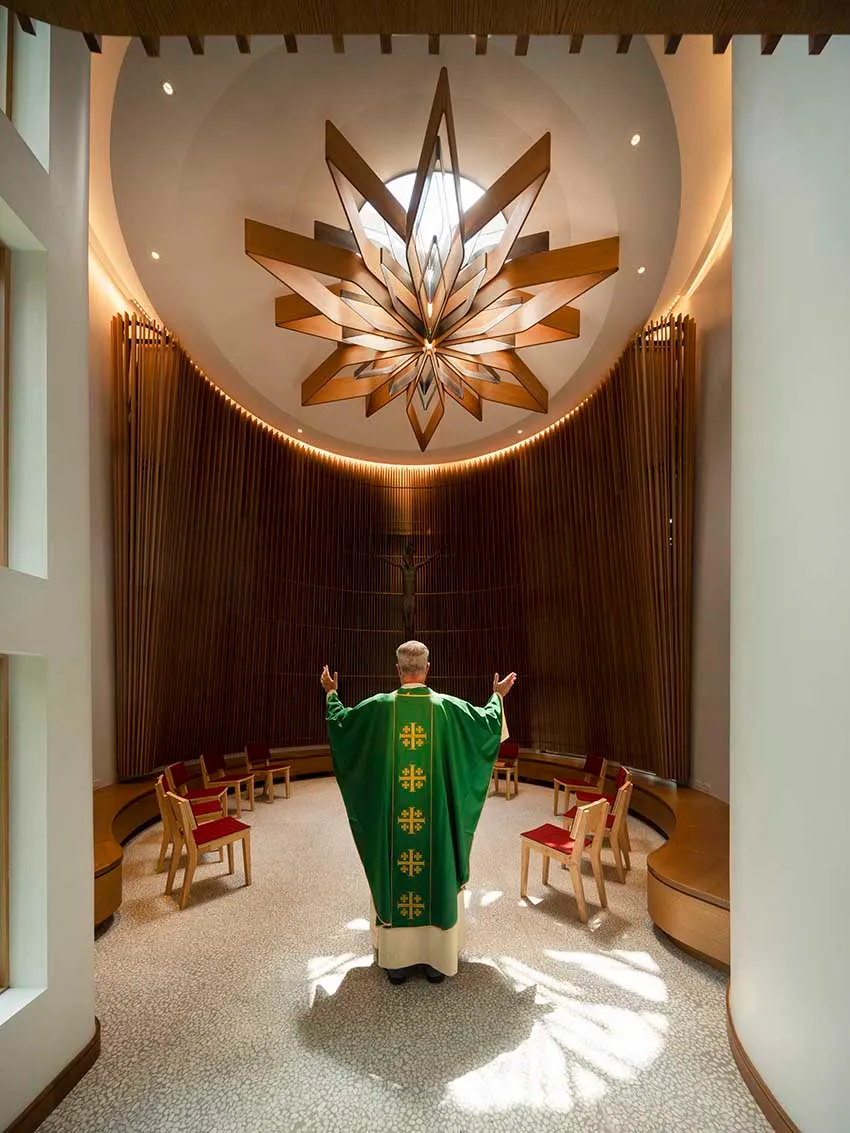
Light from the chapel skylight is diffused by a wood chandelier. (Image by Nic Lehoux)
Molly: A dome skylight, yes. It’s also a Velux product. One of the unique things about this one is that it's got a two-layer acrylic bubble over it, and both layers are clear. Often, at least one is translucent to reduce the heat gain and the light intensity. But here, we have a custom chandelier right under the skylight that diffuses light and tracks the sun as it moves around the chapel. It’s really quite beautiful.
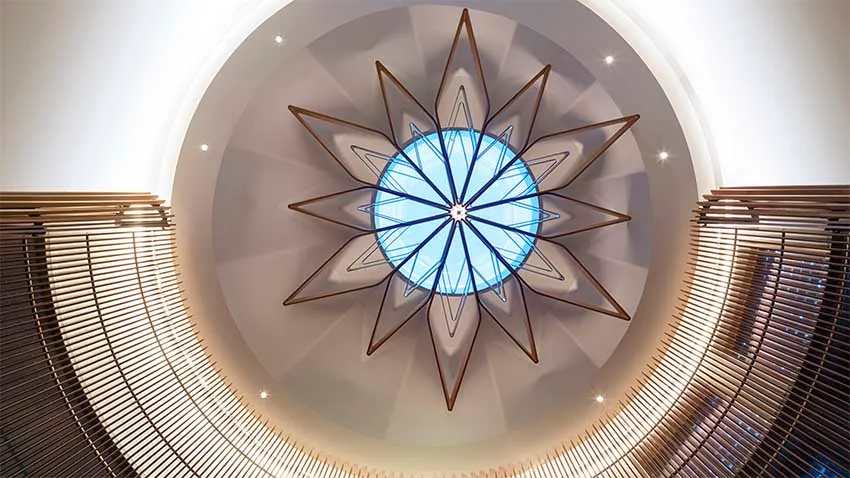
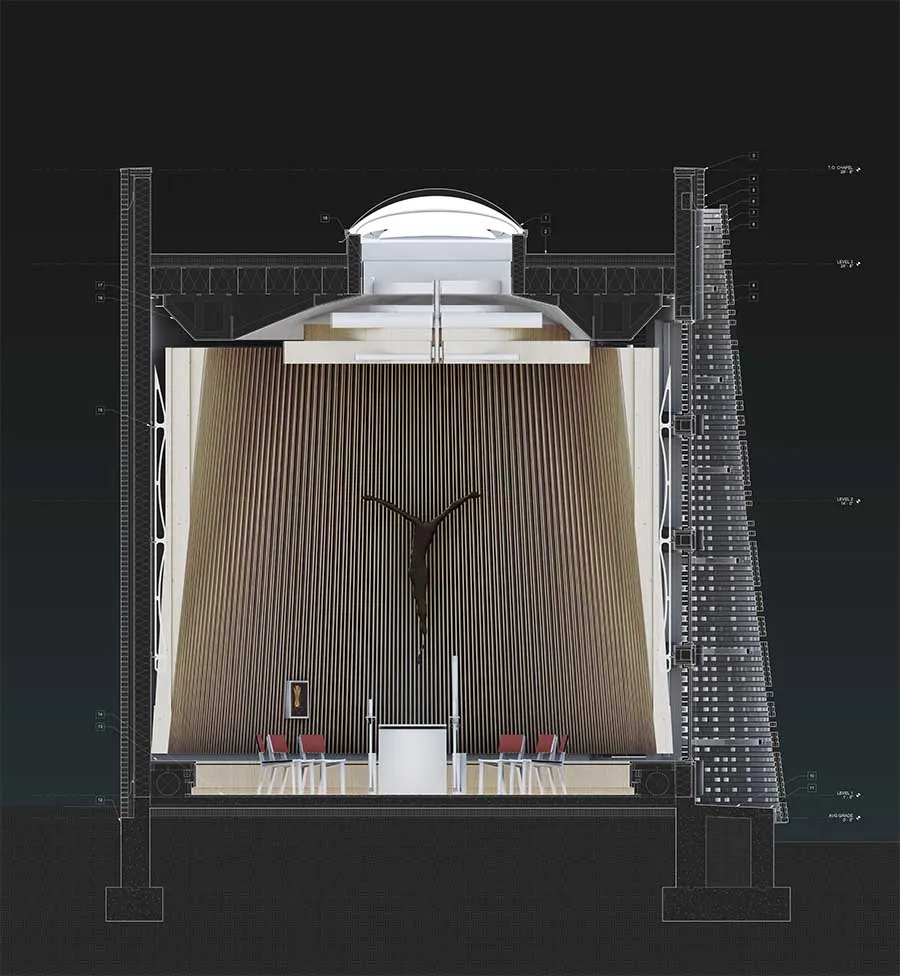
Section drawing showing the Chapel skylight. (Image by Moto Designshop)
Acelab: Overall, what were the characteristics you were looking for with the windows? What were your priorities?
Molly: Initially, it was largely driven by material and aesthetics. We were convinced that we wanted wood windows. So we were looking at Duratherm which is a manufacturer that I've used on other projects. They make a nice wood window system that we thought fit the character of the neighborhood.
Products from this Case Study on Acelab
Windows by: Duratherm Window Corp.
Click on Images to see more
Browse AllAcelab: What changed?
Molly: I think the campus community had some reservations about the maintenance of those, but ultimately it came down to cost. Those were expensive systems. So we contacted reps from Pella and they thought they could create the look we wanted. They couldn’t affordably offer wood exteriors, but there were a lot of different wood options for the interior, and the ability to just stain their typical pine, which is what we did. It’s stained to look like oak. It’s actually pretty convincing. So the frame on the interior is wood, and then on the outside its aluminum clad. That change from wood also changed our thinking about other building materials and colors. We ended up painting the windows a custom color.
Acelab: Does it have a name?
Molly: We call it “Jesuit gray.”
Acelab: I like it. Sounds like an emo band. When you were first thinking about the windows, were there any tools or services you used in your search?
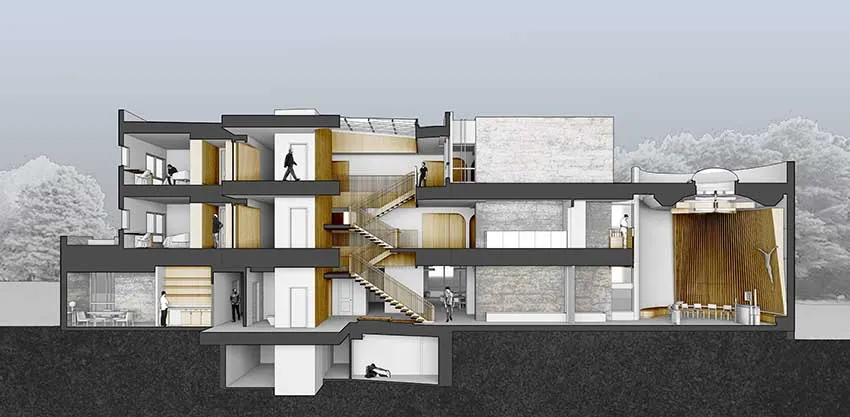
Cross section through the building showing the private, public, and chapel spaces. (Image by Moto Designshop)
Molly: It’s a lot of drawing on experience from previous projects. We also work with a spec writer and he has an enormous knowledge of different products too. So we lean on him sometimes to point us towards products that we might not have used in the past. But I could imagine a website like yours being a huge help with this process. Alongside, or maybe even in place of, an expert like a spec writer.
This interview was conducted by ADvsCOPY for Acelab. It has been condensed and lightly edited.
Learn more about all the products mentioned in this Case Study and explore all 7,033 products on Acelab. It's unbiased, transparent and 100% free.
